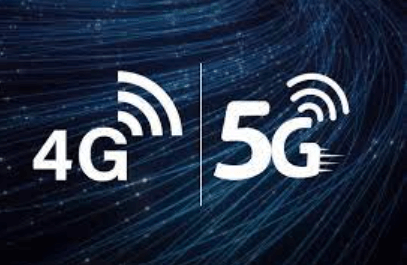Tech
Unveiling the Future: Understanding the Differences Between 4G and 5G Networks

Introduction
In the ever-evolving world of telecommunications, the transition from 4G to 5G networks represents a significant leap forward. This article aims to demystify the key differences between 4G and 5G networks, highlighting how these changes impact connectivity, speed, and the overall user experience.
- Speed and Efficiency: The Fast Lane of 5G
- 4G Networks: Introduced in the late 2000s, 4G networks brought substantial improvements over 3G, including higher speeds (up to 100 Mbps) that supported streaming video and other data-intensive applications.
- 5G Networks: 5G technology takes speed to a new level, promising peak data rates up to 20 Gbps. This quantum leap is not just about faster download speeds; it’s about enabling real-time, high-bandwidth applications like augmented reality (AR) and virtual reality (VR).
- Latency: The Response Time Revolution
- 4G Networks: 4G latency, the time taken for data to travel from source to destination, typically ranges around 50-100 milliseconds. While sufficient for current applications, this can be a bottleneck for more demanding uses.
- 5G Networks: One of the most groundbreaking features of 5G is its ultra-low latency, potentially as low as 1 millisecond. This makes 5G ideal for critical applications like remote surgery and autonomous vehicles.
- Capacity and Connectivity: Connecting More Than Just Phones
- 4G Networks: Primarily designed for mobile phones and personal devices, 4G networks can sometimes struggle with device density and network congestion.
- 5G Networks: 5G is designed with a vastly increased capacity, allowing millions of devices per square kilometer. This capacity is crucial for the Internet of Things (IoT), supporting a vast array of connected devices from smart home appliances to industrial sensors.
- Network Architecture: More Than Just Speed
- 4G Networks: 4G relies on large, high-power cell towers to broadcast signals over long distances.
- 5G Networks: 5G introduces a more complex network architecture, using a combination of large towers and small cell stations. This approach allows for more targeted and efficient use of the spectrum.
- Spectrum and Frequency: The Invisible Highways
- 4G Networks: Utilizes frequencies below 6 GHz.
- 5G Networks: Expands into higher frequency bands, up to 30 GHz and beyond. These higher frequencies, known as millimeter waves, are key to achieving the high speeds and low latency of 5G.
Conclusion
The transition from 4G to 5G networks is not just an upgrade; it’s a transformation that will enable new technologies and applications. From enhanced mobile broadband to the IoT, and from autonomous vehicles to smart cities, 5G is set to redefine how we interact with the world around us. As we embrace this new era of connectivity, it’s crucial to understand the fundamental changes that 5G brings to the table.




